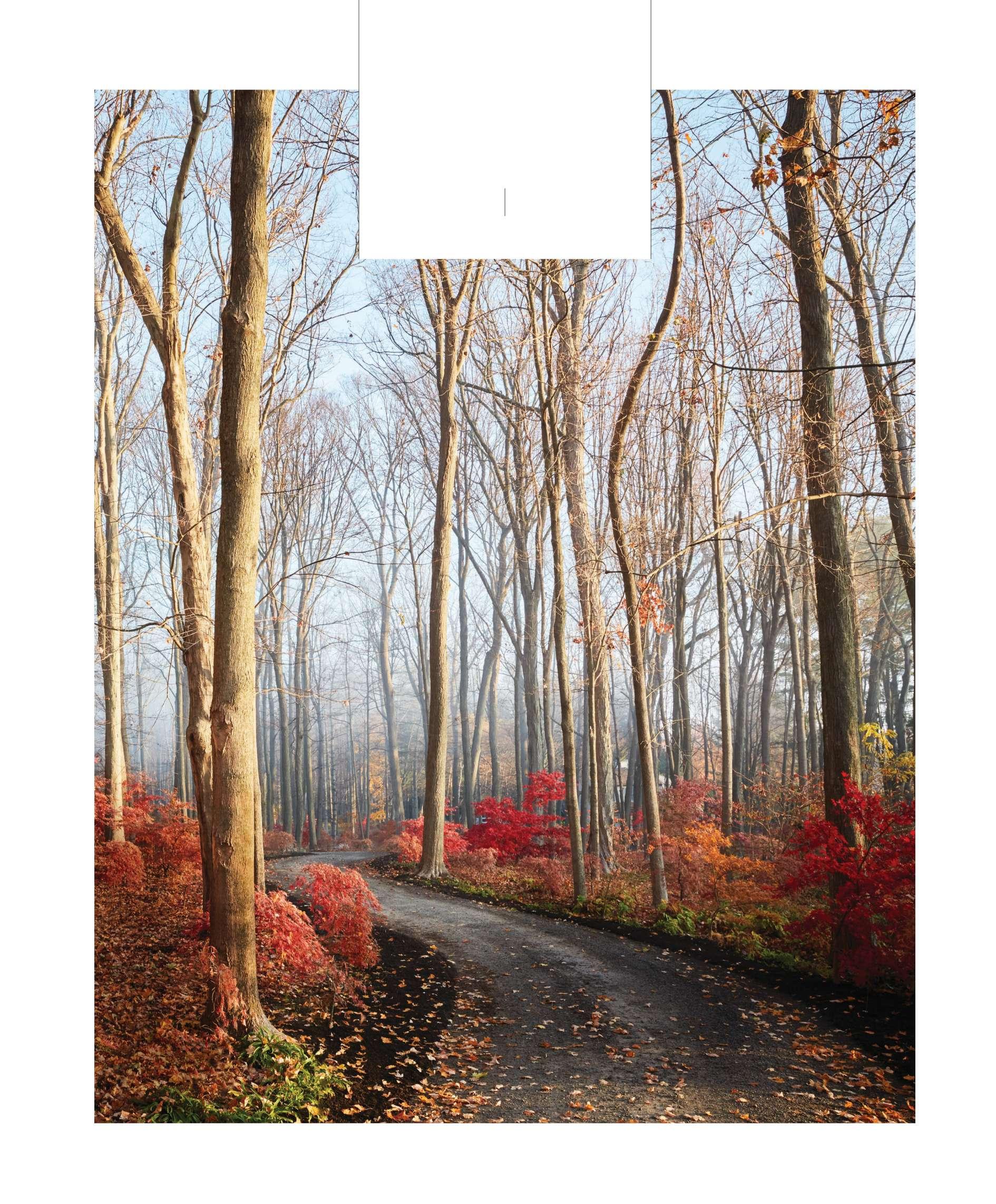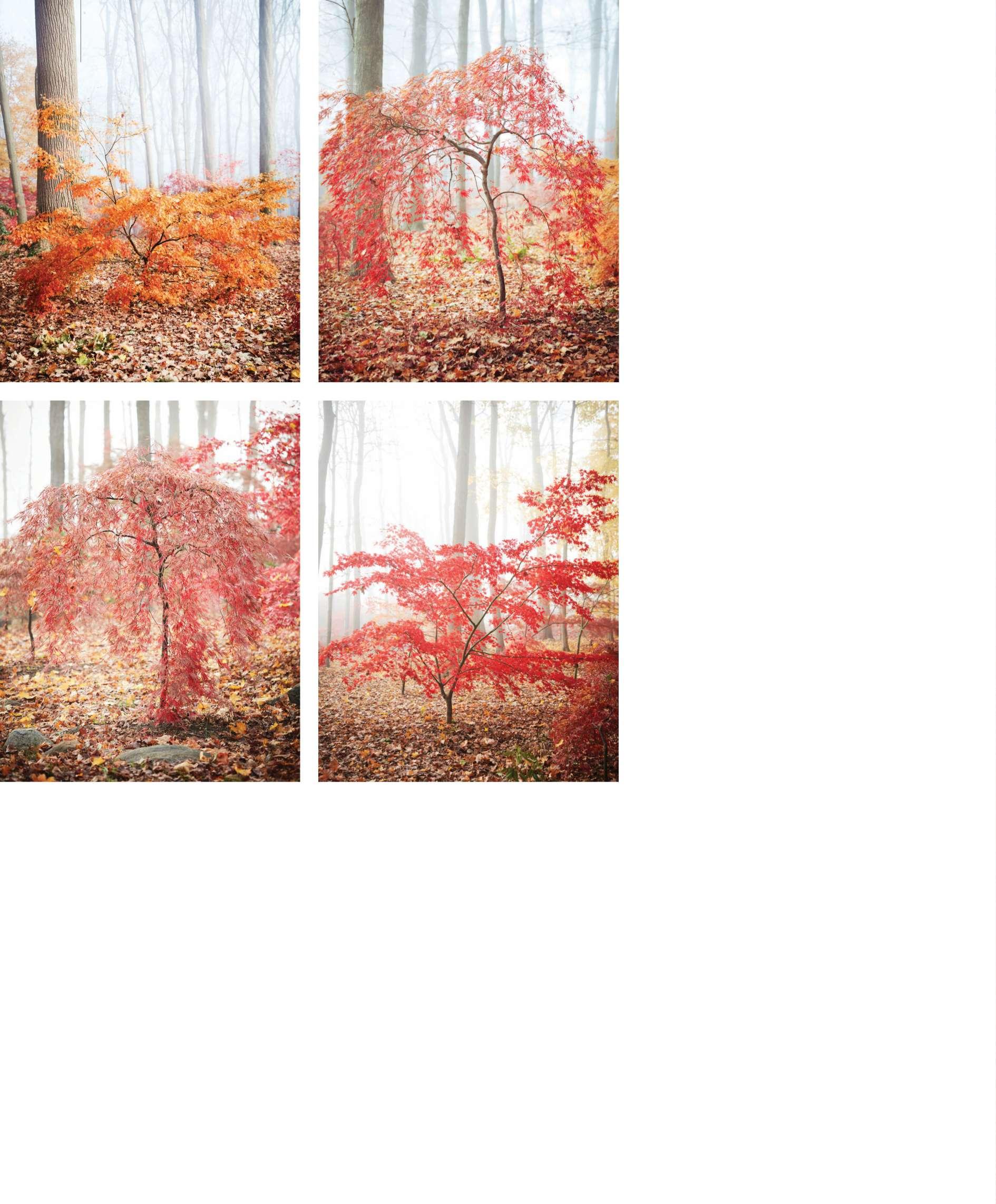
2 minute read
A peep at our founder’s Japanese maple trees, which come alive in autumn.
From M A RTH A
TEACH AND INSPIRE
Advertisement
NEW FLAMES Since Japanese maples grow best in partial sun, Martha sited hers beneath older, taller trees on her property, where they receive dappled light and afternoon shade. She dedicated this grove to her late sister, Laura Plimpton, who also loved the species.

Into the Woods
Over the past decade, Martha has planted hundreds of Japanese maples on her farm in Bedford—and every autumn, the still- diminutive trees put on a dazzling show. Feast your eyes on their brilliant foliage, and learn how she helps them thrive.
FROM MARTHA
FINE FORMS Japanese maples are compact in height and have graceful silhouettes that can be weeping, domed, or upright. Some have fine, feathery foliage; others are broad-leaved or have leaves as small as postage stamps.

IFIRST B ECAME ENAMORED with Japanese maples when I visited Japan with my then-husband and daughter years ago. On our travels from city to countryside, we saw many types of this graceful tree. It was autumn, and their colors ranged from brilliant reds to bright oranges to yellow-golds, and even the darkest magentas. I was entranced. I vowed that I would plant as many as I could, in as many different sizes, forms, and colors as possible.
I soon started having tree envy every time I saw one in a backyard, botanical garden, or fantastical landscape. I made lists of the types that intrigued me, and photographed great specimens whenever I saw them. After I moved to my farm, I visited the maple woodland of my neighbors Judy and Michael Steinhardt. This inspired me to look locally to finally establish my own grove.
On a plant-buying excursion to the North Fork of Long Island, I stopped at the legendary (but no longer open) Environmentals nursery. The founder, the late Jim Cross, was a Wall-Street-financier- turned-plantsman, and a very wellknown grower and hybridizer of rare and unusual trees and shrubs. The day I visited, I was greeted by his wife, Constance, who was thrilled that I wanted to start my own maple grove. When I left, I was the proud owner of more than 150 beauties, more than enough to start planting on the farm.
Over the past decade, I have put in more than 300 trees. I place them in rich, welldrained soil under the high shade of maple, black locust, and ash trees, in the fiveacre area adjacent to my chicken pens and peacock house. Many of them have more than doubled in size, and each has taken on the extraordinary characteristics that define its cultivar. Every fall, my gardeners and I feed them with fertilizer high in phosphorus, and trim off any wounded or broken branches. Since young trees are delicate, we protect new ones by inserting three or four bamboo stakes around the perimeter of the trunks. We also manage the undergrowth, weeding out any plants that could choke them.
The result is really spectacular. I have been so happy with the fast growth of these trees, and the vibrant colors they have added to this area of the farm. I cannot wait to see how this labor of love develops in the future, and I think Jim Cross would be pleased.










